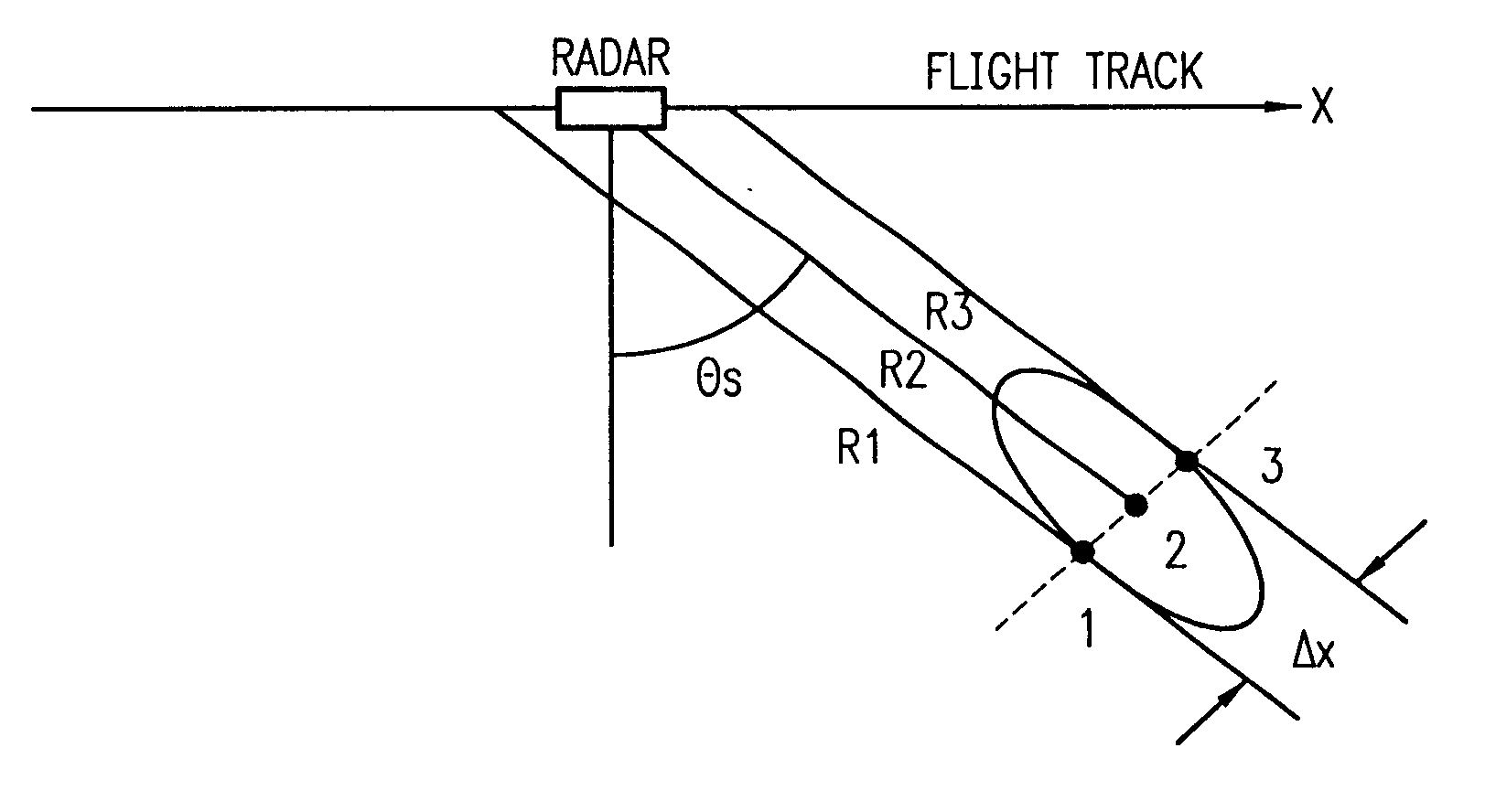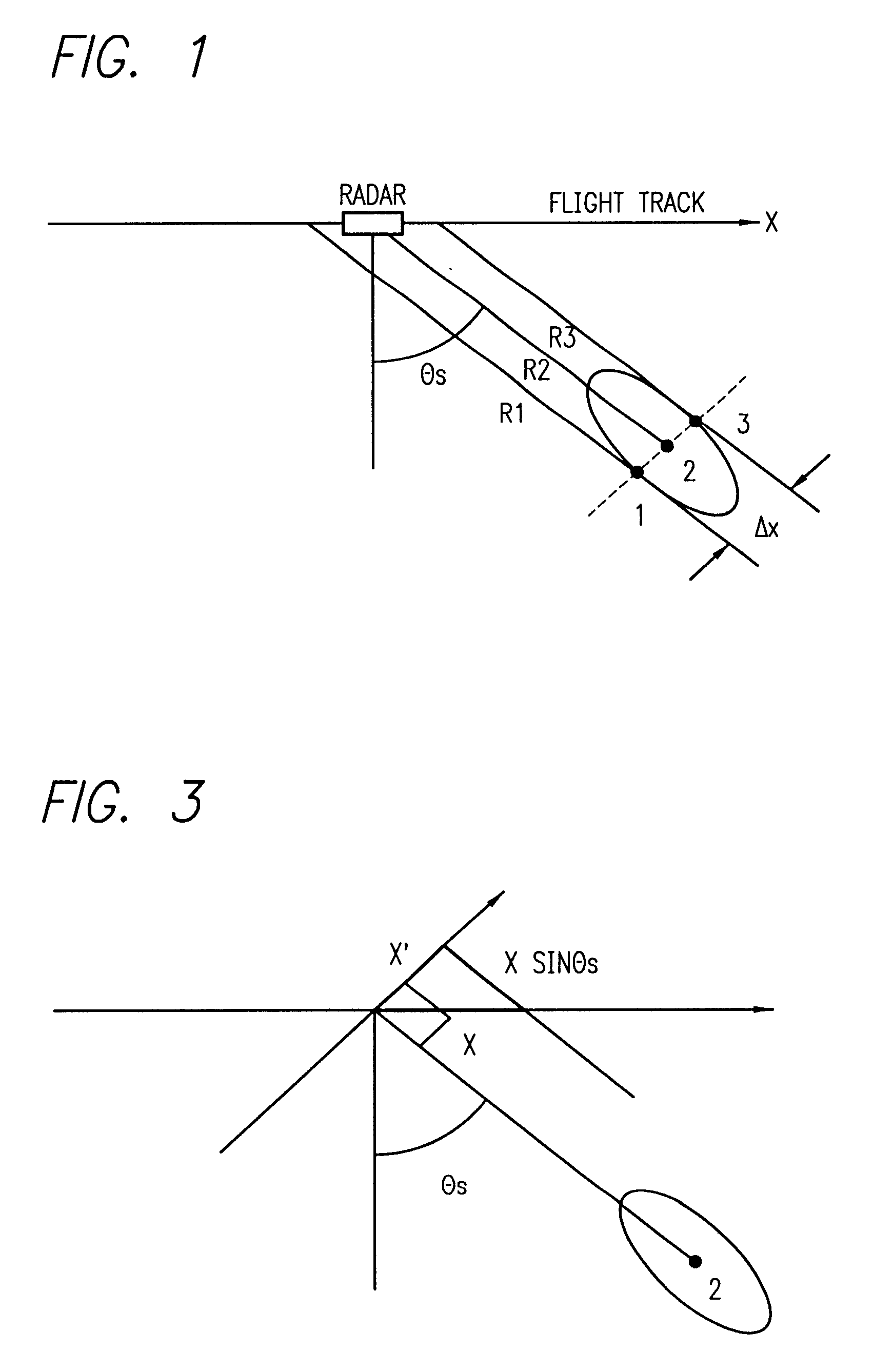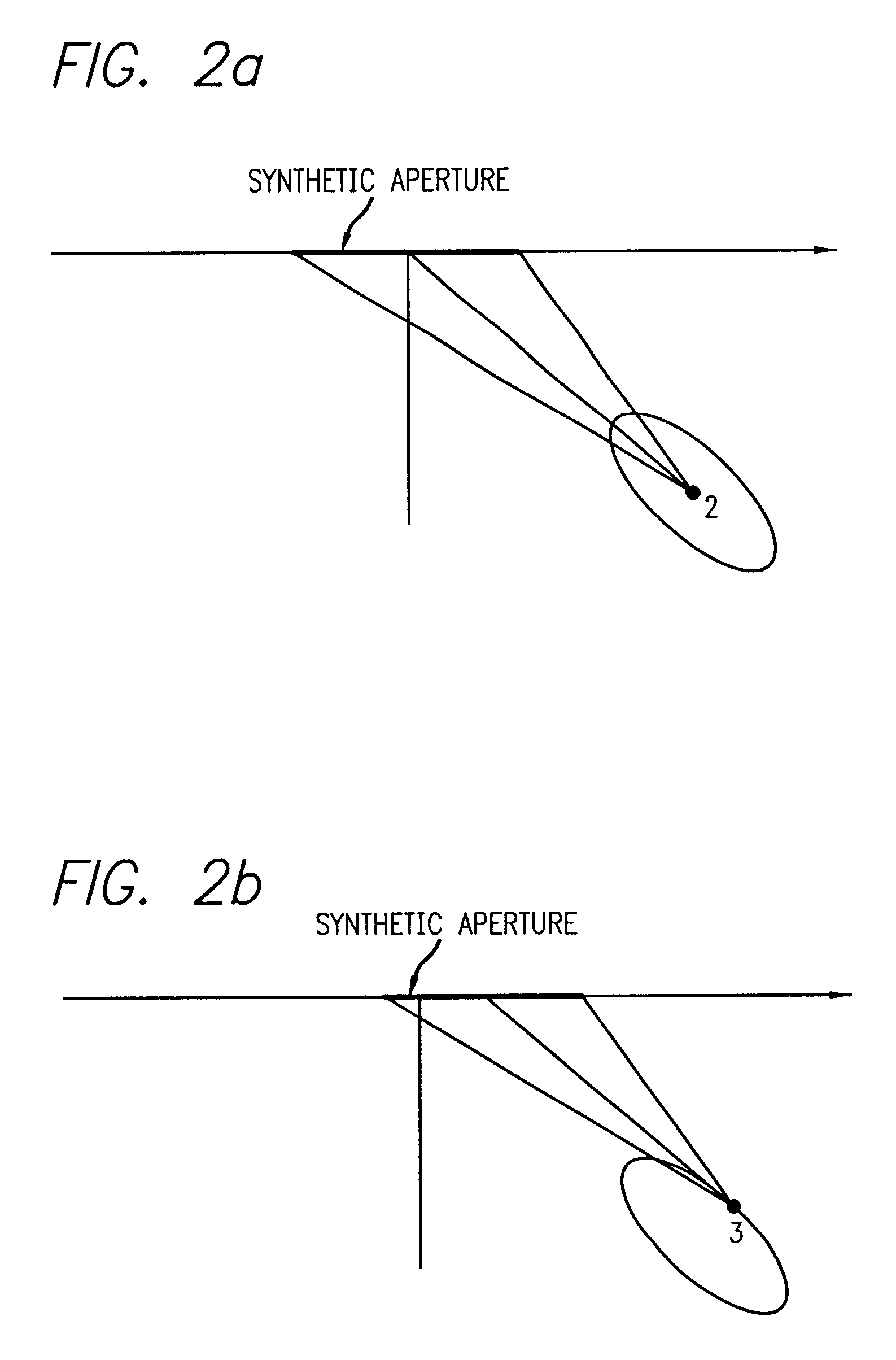System and method for processing squint mapped synthetic aperture radar data
a synthetic aperture radar and radar signal technology, applied in the field of radar, can solve the problems of degraded impulse response, large memory required to store intermediate two-dimensional data, and limited scope of the squint angle sar system,
- Summary
- Abstract
- Description
- Claims
- Application Information
AI Technical Summary
Problems solved by technology
Method used
Image
Examples
Embodiment Construction
Illustrative embodiments and exemplary applications will now be described with reference to the accompanying drawings to disclose the advantageous teachings of the present invention.
While the present invention is described herein with reference to illustrative embodiments for particular applications, it should be understood that the invention is not limited thereto. Those having ordinary skill in the art and access to the teachings provided herein will recognize additional modifications, applications, and embodiments within the scope thereof and additional fields in which the present invention would be of significant utility.
The original range-Doppler algorithm was formulated in the coordinates including range, slow time, and Doppler. In accordance with the extended range-Doppler processing method of the present invention, coordinates are formulated including range (r), along-track coordinate (x), azimuth coordinate (x'), and their corresponding frequency space k.sub.r, k.sub.x, and...
PUM
 Login to View More
Login to View More Abstract
Description
Claims
Application Information
 Login to View More
Login to View More - R&D
- Intellectual Property
- Life Sciences
- Materials
- Tech Scout
- Unparalleled Data Quality
- Higher Quality Content
- 60% Fewer Hallucinations
Browse by: Latest US Patents, China's latest patents, Technical Efficacy Thesaurus, Application Domain, Technology Topic, Popular Technical Reports.
© 2025 PatSnap. All rights reserved.Legal|Privacy policy|Modern Slavery Act Transparency Statement|Sitemap|About US| Contact US: help@patsnap.com



